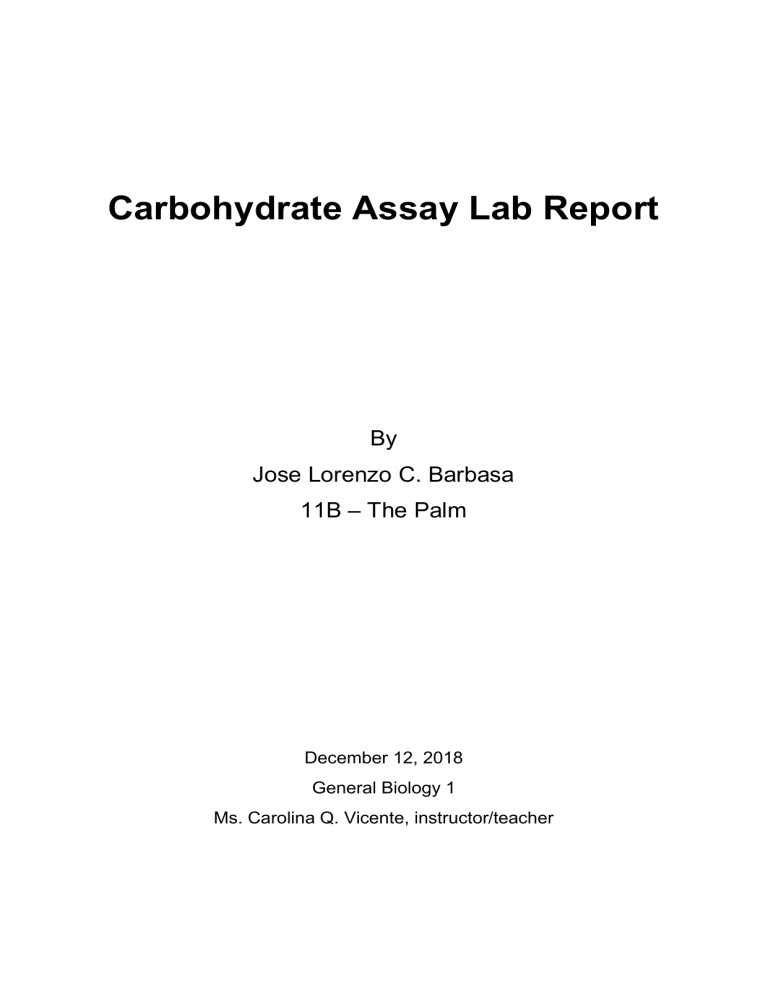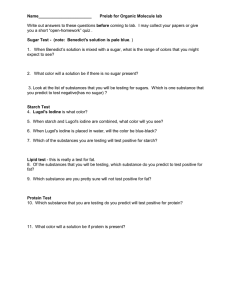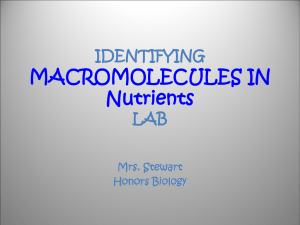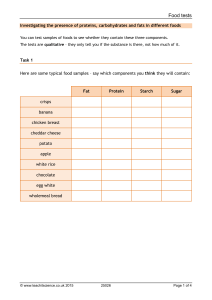Carbohydrate Assay Lab Report
advertisement

Carbohydrate Assay Lab Report By Jose Lorenzo C. Barbasa 11B – The Palm December 12, 2018 General Biology 1 Ms. Carolina Q. Vicente, instructor/teacher Purpose or Question: How are we able to determine the type of carbohydrates present in the foods we eat? Background: When we eat, we take in a certain amount of carbohydrates. As Grade 11 students, we are left with the question of whether these are monosaccharides, disaccharides, polysaccharides, or even oligosaccharides. Yes, you may say we can identify the type of carbohydrate it has just by looking it up on the World Wide Web. But let’s have a case in point. How are we able to identify them using scientific methods? Luckily, there are two tests we can use, and these are the Benedict’s qualitative assessment (Benedict’s solution) and the Lugol’s iodine test. These are chemical tests that manifest a change in colour to display the positivity or negativity of a certain type of carbohydrate being tested. The Benedict’s solution is a reagent often used in assessing for monosaccharidal positivity or negativity (reducing sugars/simple carbohydrates). It is blue in colour and transparent in visibility. When mixed with a monosaccharide solution, it displays a change in colour, and may range from green to yellow to orange to as far as brick-red. Meanwhile, Lugol’s iodine is used to test for disaccharidal or polysaccharidal positivity or negativity (complex carbohydrates). It is amber or brown in colour and slightly translucent in visibility. When mixed with a disaccharide or polysaccharide, it yields colours depending on what sugar is put. For example, if starch is present, it gives a blue-black colour. If glycogen is present, it gives a brown-blue colour. This activity involves making two chemical tests. In the first test, Benedict’s solution will be used to test known sugars. In the second test, Lugol’s iodine will be used to test an identical set of samples for starch. The final tubes will become the control tubes or the basis tubes of the experiment. Hypothesis: The colour of the liquids will change to a certain extent, from lighter hues to darker hues, and vice versa. Materials: 6 test tubes test tube rack test tube holder wax pencil/tape syringe/dropper safety goggles and apron Benedict’s solution Lugol’s iodine solution Paper towels Samples (3 knowns and 5 unknowns) Hot bath (beaker half filled with water and boiled) Solutions Monosaccharide (glucose solution) Disaccharide (table sugar solution) Polysaccharide (corn starch solution) biscuit solution milk juice (lemon/mint) unknown banana puree potato puree known



